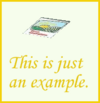This is an old revision of this page, as edited by Frietjes (talk | contribs) at 22:16, 23 June 2014. The present address (URL) is a permanent link to this revision, which may differ significantly from the current revision.
Revision as of 22:16, 23 June 2014 by Frietjes (talk | contribs)(diff) ← Previous revision | Latest revision (diff) | Newer revision → (diff)| This is a documentation subpage for Template:Bulleted list. It may contain usage information, categories and other content that is not part of the original template page. |
| This template uses Lua: |
- {{blist}}
- {{bulleted}}
- {{ulist}}
- {{unordered list}}
This template may be used to generate a bulleted list in similar vein to HTML's <ul>...</ul> list. A typical application is within captions, where the equivalent wiki markup (asterisks at the starts of new lines) may be awkward or impossible to use.
Usage
{{bulleted list |item1 |item2 |...}}
Parameters
- Positional parameters (
1,2,3...) - these are the list items. If no list items are present, the module will output nothing. class- a custom class for the<div>...</div>tags surrounding the list, e.g.plainlinks.style- a custom css style for the<div>...</div>tags surrounding the list, e.g.font-size: 90%;.list_style- a custom css style for the list itself. The format is the same as for the|style=parameter.item_style- a custom css style for all of the list items (the<li>...</li>tags). The format is the same as for the|style=parameter.item1_style,item2_style,item3_style... - custom css styles for each of the list items. The format is the same as for the|style=parameter.
Example

- one
- two
- three
]
See also
- {{unbulleted list}} / {{plainlist}}, templates producing vertical lists without prefixes (i.e without bullets, other shapes, numbering, etc).
- {{ordered list}}, a template producing a vertical list whose items are prefixed by incremental numbers or letters.
- {{hlist}} / {{flatlist}}, templates producing horizontal lists (strings of items separated by interpuncts).